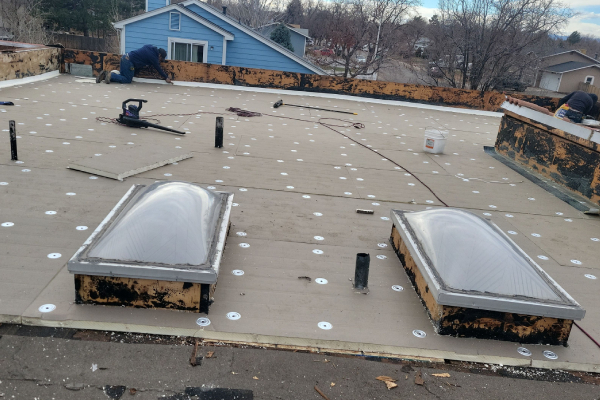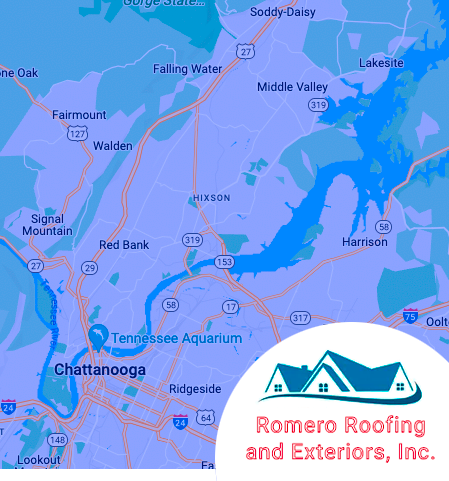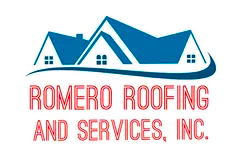Romero Roofing Blog
Flat vs. Sloped Commercial Roofs: Which One is Best for Your Business?
Choosing the right type of roof for your commercial building is a critical decision that impacts maintenance, energy efficiency, durability, and long-term costs. While many businesses automatically opt for a flat roof due to its traditional association with commercial properties, sloped roofs have gained popularity for their benefits in durability and weather resistance.
Each roofing type has its advantages and drawbacks, and the best choice depends on factors such as your building’s purpose, climate conditions, and budget. In this blog, we’ll break down the pros and cons of flat and sloped commercial roofs, compare their performance, and help you determine which is best suited for your business.
Understanding Flat Roofs and Sloped Roofs
Before diving into the pros and cons of each, let’s clarify what flat and sloped commercial roofs are and where they’re commonly used.
What Is a Flat Roof?
A flat roof is a low-slope roofing system that appears level, although it typically has a slight pitch (between ¼ and ½ inch per foot) to allow for water drainage. Flat roofs are often covered with materials like TPO (thermoplastic polyolefin), EPDM (ethylene propylene diene monomer), PVC (polyvinyl chloride), or built-up roofing (BUR).
- Common uses: Warehouses, retail centers, office buildings, and industrial facilities.
- Key characteristics: Provides space for HVAC units, solar panels, and rooftop accessibility.
What Is a Sloped Roof?
A sloped commercial roof features a pitch that helps with water runoff and weather resistance. The slope can vary significantly depending on design preferences and local weather considerations. Materials used for sloped commercial roofs include metal, asphalt shingles, clay tiles, and standing seam systems.
- Common uses: Hotels, schools, restaurants, medical facilities, and commercial buildings with a residential-style design.
- Key characteristics: Enhanced water drainage, lower maintenance, and higher durability in extreme weather.
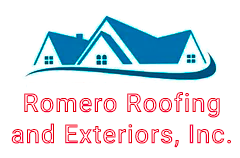
Romero Roofing & Exteriors, Inc.
Romero Roofing was wonderful to work with. They came out promptly after we called for a quote, and once we pulled the trigger, they finished the job in a day. Quick, efficient, and awesome work. John is great – he communicated with me throughout the process to make sure I was always in the loop. Can’t recommend them enough!
-Jessica M.
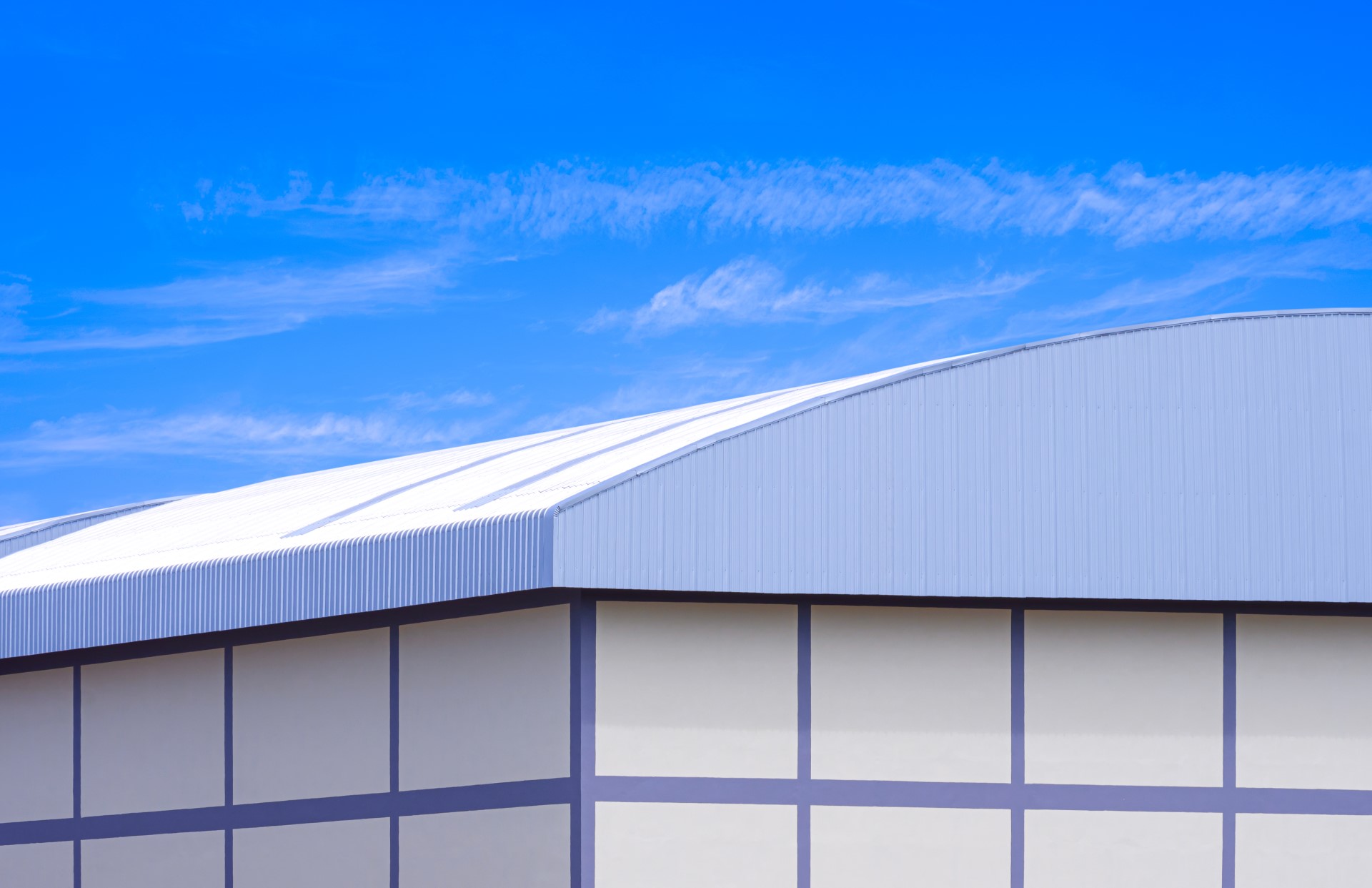
Advantages of Flat Roofs for Commercial Buildings
Flat roofs have long been a standard for commercial buildings, particularly in urban areas. They offer several benefits that make them attractive for certain business operations.
Cost-Effective Installation
One of the biggest advantages of flat roofs is their lower upfront cost compared to sloped roofs. Since they require fewer materials and less labor, they can be installed at a more affordable price. This is particularly beneficial for businesses operating on tight budgets or for large commercial complexes where roofing costs can add up significantly.
Space Utilization
Flat roofs provide additional usable space for various functional purposes, including:
- HVAC Units: Many commercial buildings house air conditioning units on the roof to save ground space.
- Solar Panels: Businesses looking to go green can install solar panel arrays more easily on a flat surface.
- Rooftop Gardens or Patios: Some buildings integrate green roofing systems for energy efficiency and aesthetics.
Easier Maintenance and Accessibility
Flat roofs allow for easier inspection, maintenance, and repairs because they provide a level walking surface. Technicians can access equipment or conduct roof repairs more safely compared to the steep angles of a sloped roof.
Modern, Minimalist Appearance
Many businesses prefer the clean, modern aesthetic of a flat roof, particularly for contemporary office spaces, retail stores, or tech hubs. Flat roofs provide a sleek, unobtrusive look that blends well with modern architecture.
Disadvantages of Flat Roofs
Despite their benefits, flat roofs come with some challenges that business owners should consider before making a decision.
Drainage Issues and Water Pooling
Flat roofs don’t shed water as easily as sloped roofs. Without proper drainage systems, standing water can accumulate, leading to leaks, mold growth, and structural damage over time.
Shorter Lifespan
Compared to sloped roofs, flat roofing materials tend to have a shorter lifespan. For example:
- TPO and PVC roofs last around 20–30 years.
- EPDM rubber roofs last about 20–25 years.
- Built-up roofs (BURs) last around 15–25 years.
More Frequent Repairs
Flat roofs require regular maintenance because of their exposure to standing water, UV rays, and potential punctures from foot traffic or falling debris. Over time, flat roofs may develop cracks or blisters, requiring prompt repairs to prevent water infiltration.
Advantages of Sloped Roofs for Commercial Buildings
While flat roofs dominate commercial properties, sloped roofs offer unique advantages that can make them a better long-term investment.
Superior Drainage and Leak Prevention
The most significant advantage of a sloped roof is effective water drainage. The pitch of the roof allows rainwater, snow, and debris to slide off naturally, reducing the risk of leaks and water damage. This makes sloped roofs ideal for areas with heavy rainfall or snowfall.
Longer Lifespan
Sloped roofing materials tend to last much longer than flat roofing systems:
- Metal roofs: 40–70 years
- Clay or concrete tiles: 50–100 years
- Architectural shingles: 30–50 years
- Slate roofs: 75+ years
Because sloped roofs experience less direct water exposure, they require fewer repairs and replacements, offering long-term cost savings.
Enhanced Energy Efficiency
Sloped roofs can improve a building’s energy efficiency by allowing for better insulation and ventilation. A well-ventilated sloped roof:
- Reduces heat buildup in summer.
- Prevents moisture accumulation in winter, reducing mold risk.
- Improves HVAC efficiency, leading to lower energy bills.
Increased Curb Appeal and Property Value
For businesses that rely on customer-facing appearances—such as restaurants, hotels, or medical offices—sloped roofs offer a more polished, professional look. They enhance a building’s aesthetic appeal, potentially increasing its resale or rental value.
Disadvantages of Sloped Roofs
Despite their durability and visual appeal, sloped roofs have some drawbacks that may make them less suitable for certain businesses.
Higher Initial Cost
Sloped roofs require more materials and labor for installation, making them more expensive upfront. Businesses looking for a low-cost roofing solution may find the investment too steep.
Limited Usable Space
Unlike flat roofs, which provide extra space for HVAC units or solar panels, sloped roofs offer less functional rooftop area. This can be a disadvantage for businesses that need rooftop access.
More Challenging Maintenance
While sloped roofs require fewer repairs, they can be more difficult and costly to maintain. Inspections, gutter cleanings, or repairs require specialized equipment and safety precautions.
Which Roof Type is Best for Your Business?
Ultimately, the best roof type for your commercial property depends on several factors, including your budget, location, and business operations.
Factor | Best for Flat Roofs | Best for Sloped Roofs |
Budget | Lower upfront cost | Higher initial investment |
Lifespan | 15-30 years | 40-100 years |
Maintenance Needs | Frequent but accessible | Infrequent but harder to access |
Weather Resilience | Good, but prone to leaks | Excellent, with natural water runoff |
Energy Efficiency | Moderate | Higher due to better insulation |
Aesthetics | Modern and minimalist | Traditional and high-end |
Space Utilization | HVAC, solar panels, green roofs | Limited functional rooftop space |
Final Recommendation
- Choose a flat roof if you prioritize cost-effectiveness, space utilization, and accessibility.
- Choose a sloped roof if you value longevity, durability, and energy efficiency.
For Chattanooga’s climate—where heavy rain and occasional ice storms occur—sloped roofs may be the better long-term choice for storm resilience and water drainage. However, flat roofs remain practical for large commercial properties needing rooftop space for HVAC systems, solar panels, or green roofing solutions.
Weather Considerations: Which Roof Performs Best in Different Climates?
When deciding between a flat or sloped commercial roof, climate is one of the most important factors to consider. Different weather conditions affect roofing performance, durability, and maintenance needs.
Flat Roof Performance in Different Climates
- Hot and Dry Climates: Flat roofs perform well in hot and arid regions where rainfall is minimal. The ability to install reflective coatings can help mitigate heat absorption, keeping energy costs lower.
- Humid and Rainy Climates: Flat roofs can struggle in areas with heavy rainfall if drainage systems are not properly maintained. Standing water increases the risk of leaks, mold, and structural damage.
- Cold and Snowy Climates: Snow accumulation is a significant concern for flat roofs. Without proper drainage, melting snow can refreeze, leading to ice dams and additional weight strain on the roof structure.
Sloped Roof Performance in Different Climates
- Hot and Dry Climates: Sloped roofs can provide superior ventilation, preventing excess heat buildup in the attic and reducing cooling costs.
- Humid and Rainy Climates: Sloped roofs naturally direct rainwater off the building, reducing the risk of water damage. This makes them ideal for storm-prone regions like Chattanooga, where rainfall is frequent.
- Cold and Snowy Climates: The natural slope prevents snow from accumulating on the roof, helping avoid structural stress and ice dam formation.
Best Choice for Chattanooga:
Given Chattanooga’s humid summers, frequent thunderstorms, and occasional winter ice, a sloped roof is generally the better option for long-term performance and durability. However, with a properly designed drainage system, flat roofs can still work well for large commercial buildings.
Sustainability and Environmental Impact
With businesses increasingly focusing on sustainability, the choice of roofing material and structure can play a significant role in reducing environmental impact.
Flat Roof Sustainability Benefits
- Solar Panel Integration: Flat roofs provide an ideal surface for installing solar panels, which help businesses reduce their reliance on traditional energy sources.
- Green Roofing Options: Some businesses install rooftop gardens or “green roofs,” which improve insulation, reduce heat absorption, and improve air quality.
- Cool Roof Coatings: Reflective coatings can be applied to reduce heat absorption and lower cooling costs.
Sloped Roof Sustainability Benefits
- Longer Lifespan: Sloped roofs made of metal, clay, or slate last significantly longer than flat roofing materials, reducing waste over time.
- Efficient Water Management: Rainwater collection systems can be integrated into sloped roofs, allowing businesses to repurpose water for landscaping or other uses.
- Energy Efficiency: Natural ventilation from sloped roofs helps regulate indoor temperatures, reducing HVAC usage and energy consumption.
Best Choice for Sustainability:
If sustainability is a priority, both roofing types offer benefits, but flat roofs are better suited for solar panels and green roofing systems, while sloped roofs provide long-term material sustainability and energy efficiency.
Which Commercial Roof is Right for You?
Both flat and sloped commercial roofs have their advantages, and the right choice depends on your building’s needs. Investing in the right roofing system can save you money, reduce maintenance headaches, and protect your business from weather-related damage.
At Romero Roofing and Exteriors, Inc., we specialize in installing and maintaining both flat and sloped commercial roofing systems. Contact us today for a consultation and let our experts help you choose the best roofing solution for your business!

